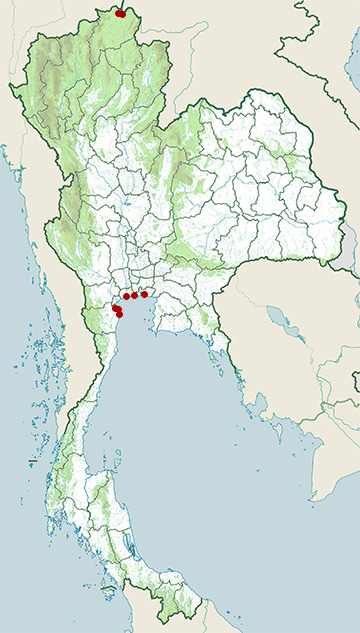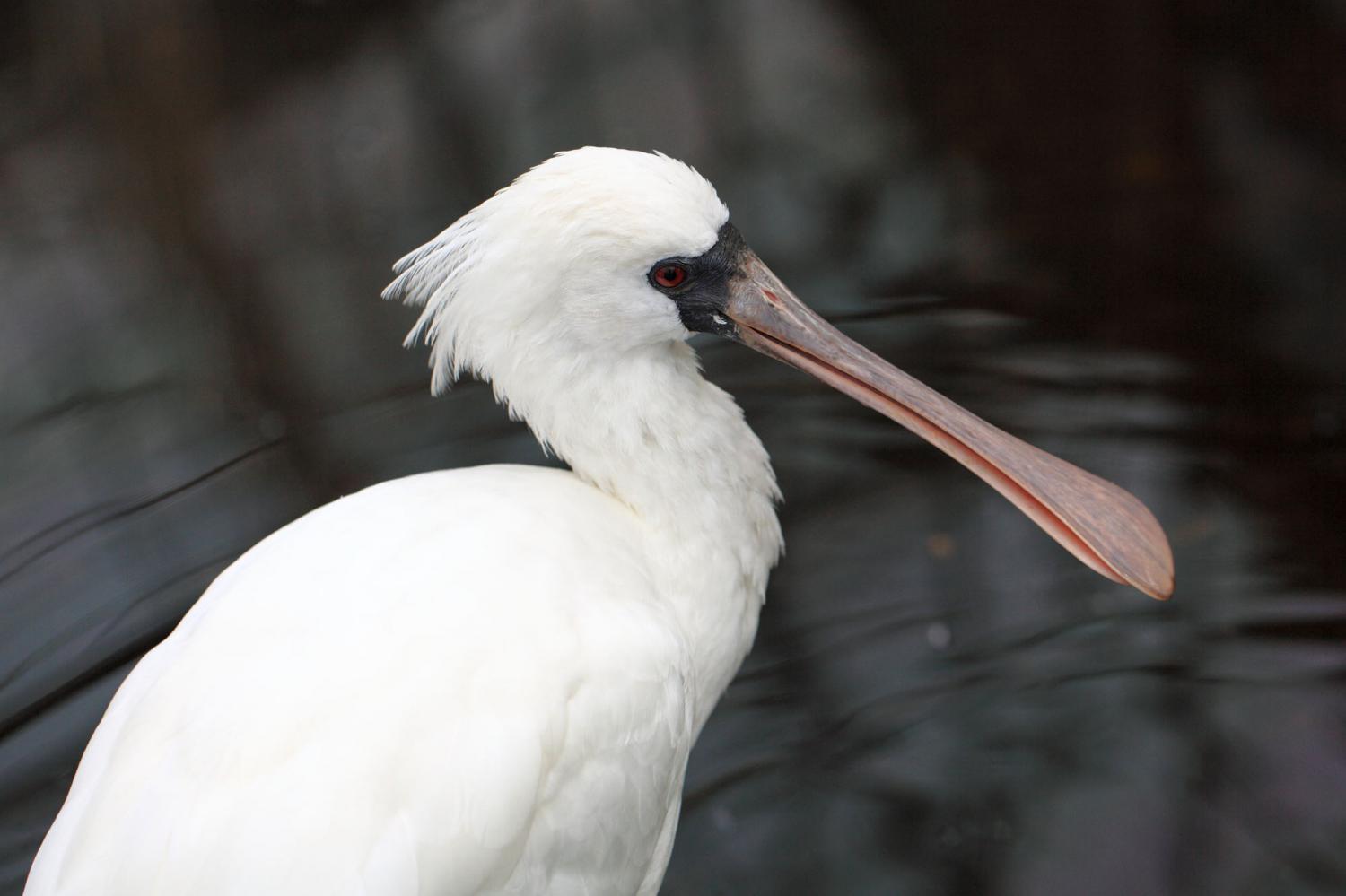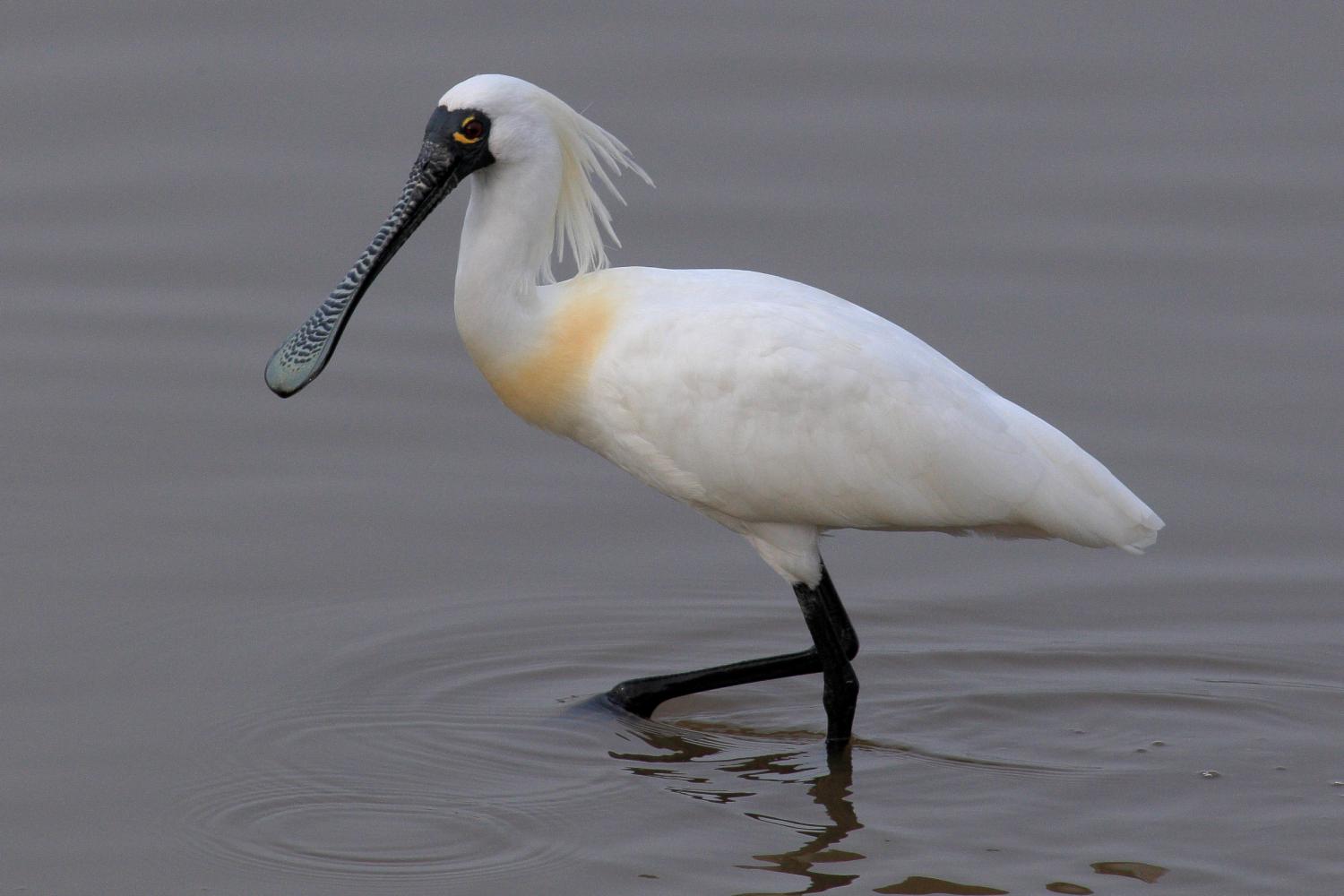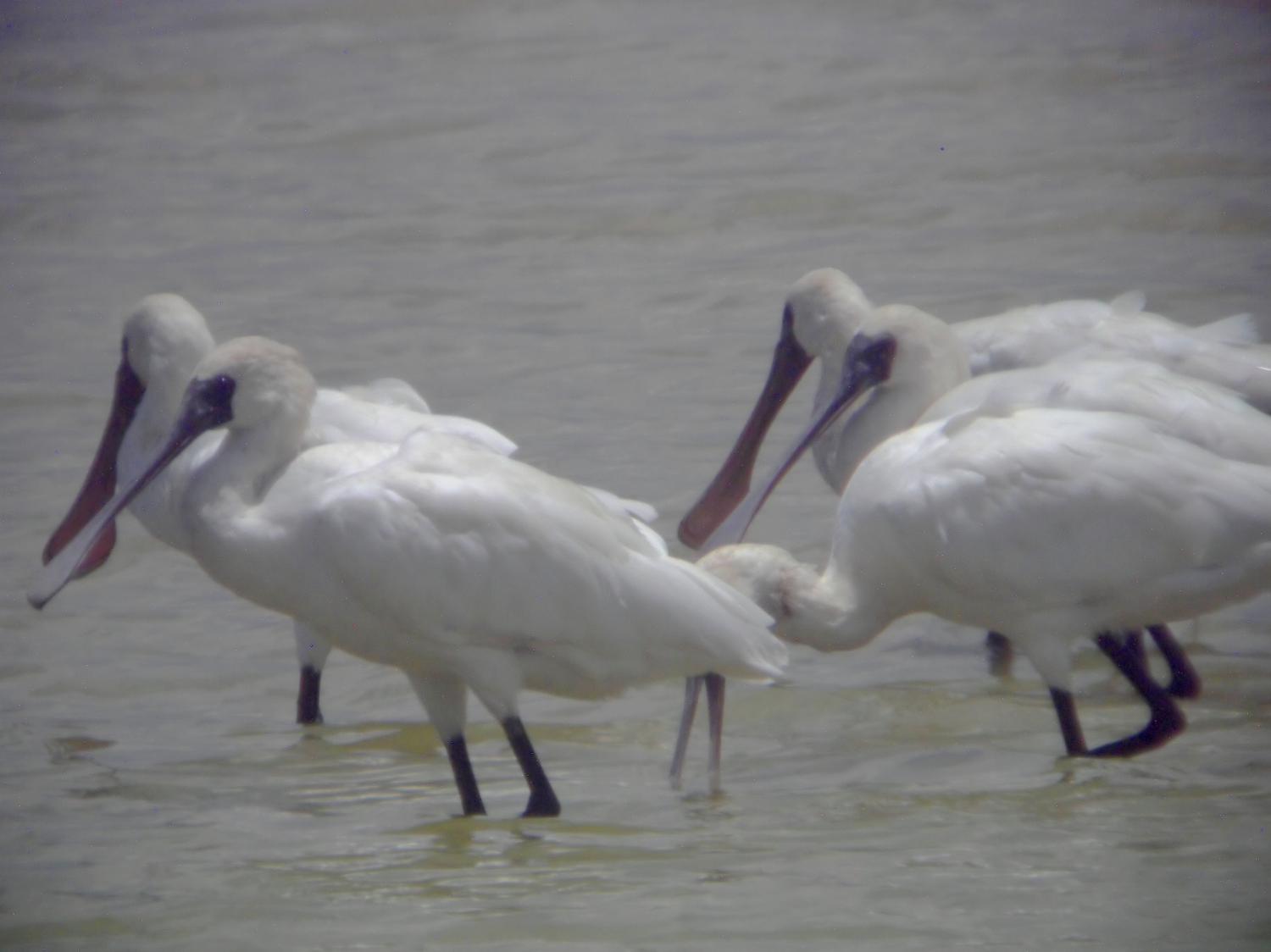Species of Thailand
Black-faced spoonbill
Platalea minor
Coenraad Jacob Temminck & Hermann Schlegel, 1849
In Thai: นกปากช้อนหน้าดำ
delta in Vietnam. More recently, sightings of black-faced spoonbill birds were noted in Thailand, the Philippines, mainland China, and Macau They were classified as an endangered species through IUCN in 2005. Declines in their population are predicted in the future, mainly due to the amount of deforestation, pollution, and other man-made industries.
The black-faced spoonbill population in the 2012 census was recorded at 2, 693 birds, with an estimation of 1, 600 mature birds. Breeding colonies occur between March and August, on small islands. These birds are known to be crepuscular eaters, using intertidal mudflats.
Conservation efforts have been made, and surveys were taken in order to determine the opinions and awareness of the local residents, residing close to the black-faced spoonbill’s natural habitats. One survey taken by Jin et al. 2008, inquired upon the ‘Willingness-To-Pay” factor in the locals, as well as understanding effects on mandatory surcharges compared to voluntary payments.
Taxonomy
A study of mitochondrial DNA of the spoonbills found that the black-faced and royal spoonbills were each other's closest relatives. Out of the six Platalea species within the family Threskiornithidae, the black-faced spoonbill is the rarest.
Breeding
Black-faced spoonbills reached a serious low in population in the 1990s, but by 2003 their numbers increased to at least 1, 069 counted individuals. While it is known that their breeding area covers northeastern China and several islands between North and South Korea, human-assisted breeding efforts have not been overly successful due to the difficulty in sexing the black-faced spoonbills, yet using the polymerase chain reaction technique on DNA samples has allowed researchers to use another method to correctly sex adult Platalea minor specimens.
After migrating to their wintering locations, black-faced spoonbills return with yellow breeding plumage, which extends from the back of their heads to their breasts.
While this plumage only develops during the third or fourth year of life when the black-billed spoonbill is sexually mature, only about half of black-billed spoonbills with this plumage breed each breeding season, which contributes to the very slow pace at which the population numbers are increasing.
Distribution
The global population of this species, is likely based on the winter population count which was carried out in 1988-1990 in all known sites. This count estimated about only 288 individuals. As of 2006, following sustained conservation efforts, the estimated global population had increased to 1, 679 the 2008 census resulted in an estimated total count of 2, 065 individuals [http://www.taipeitimes.com/News/taiwan/archives/2008/03/14/2003405428; and a 2010 census reported 2, 346 The known localised population of North Korea is not known to exceed 30 birds. However there is believed to be another, so far undiscovered colony which provides regional population stability and it is assumed to be probably located in north-east China; for example, on the islands of Liaoning (near the Korean nesting zone).
As black-faced spoonbills are migratory birds, their conservation is based on the protection of their breeding, “stop-over” and wintering grounds, making conservation efforts complex. However, spoonbills are able to adapt to disturbances of large-scale. The exact distribution of the species remains unclear, although some attempts at modelling population developments under climate change impacts have been made.
Threats
It is thought that the principal cause of the decline of this species is the destruction of its habitat, more particularly the "valorization" of intertidal mudholes for agriculture, and more recently aquaculture and industrialization. The Korean War (1950–1953) must also have had a negative impact on the species, because the birds ceased nesting in South Korea at that time. In Japan, where it was once common for them to winter, they became extremely rare at this same time, and in later years there has never been a winter in which more than 5 birds were observed.
With the construction of the Shinkansen Bridge in the Yatsushiro Sea between 2004 and 2009 next to a very important migration site for the black-faced spoonbills, many feared that it would cause their numbers to decrease. Thankfully, because of carefully planned out measures implemented in order to counter act the construction of the bridge, the population actually managed to increase during the time of construction.
Human disturbances can also be much more direct. Many humans disturb mating patterns unknowingly by taking photographs of birds during their mating time, leading to a decrease in offspring. Other humans willingly take eggs for selfish reasons, which accounted for 10% of the eggs taken in the Xing-Ren Tuo region of China in 1999.
Conservation
The bird is a protected species in China as part of the China Red Data Book; its stopover site at Jiuduansha off Shanghai is a national nature preserve. In Hong Kong, it is a protected species under Wild Animals Protection Ordinance Cap 200. In Mai Po Marshes, a quarter of the world's population of black-faced spoonbill can be found during migration.
The species is reasonably well protected in North Korea, where their nesting islands off the coast were declared a Zone of Protection with restricted access. There remain nevertheless several threats, mainly in the wintering zones. The need for land to assign to industry is great in the wintering sites in Taiwan, whereas those in Vietnam are being converted for shrimp breeding, though they are within a reserve subject to the Ramsar Convention.
During the winter months, over half of the black-faced spoonbill population migrates to the Chiku Wetland in southwestern Taiwan. The birds incapable of catching large fish; therefore many of them rely on the largescale mullets to feed off of in the winter months spent in the wetlands. These mullets however have recently become endangered due to the increase of spoonbill population who spend the winter months there (minimum of 191 birds in 1991/1992 up to a minimum of 840 in 2004/2005). Conservation of the largescale mullet is imperative in order to continue to sustain the endangered black-faced spoonbills.
In Hong Kong, disturbances by fishermen and shell gatherers often prevent the birds from feeding at low tide. In addition, with the continued expansion of human populations in the Far East, pollution will probably become an important problem. Disease has the ability to devastate the black-face spoonbills as well. In the winter of 2002/2003, 73 of the population died due to avian botulism. It may be necessary to establish additional protective areas or reserves in order to not let the population of birds to succumb to disease.
The black-faced spoonbill is legally recognized as natural monument #205 in South Korea.
This article uses material from Wikipedia released under the Creative Commons Attribution-Share-Alike Licence 3.0. Eventual photos shown in this page may or may not be from Wikipedia, please see the license details for photos in photo by-lines.
Category / Seasonal Status
Wiki listed status (concerning Thai population): Very rare winter visitor, endangered
BCST Category: Recorded in an apparently wild state within the last 50 years
BCST Seasonal status: Non-breeding visitor
Scientific classification
- Kingdom
- Animalia
- Phylum
- Chordata
- Class
- Aves
- Order
- Pelecaniformes
- Family
- Threskiornithidae
- Genus
- Platalea
- Species
- Platalea minor
Common names
- Thai: นกปากช้อนหน้าดำ
Photos
Please help us review the bird photos if wrong ones are used. We can be reached via our contact us page.
Range Map

- Ban Laem District, Phetchaburi
- Bangkok Coast
- Chiang Saen District, Chiang Rai
- Laem Pak Bia
- Nong Bong Khai Non-Hunting Area
- Pak Thale
- Samut Prakan Coast
- Samut Sakhon Coast



